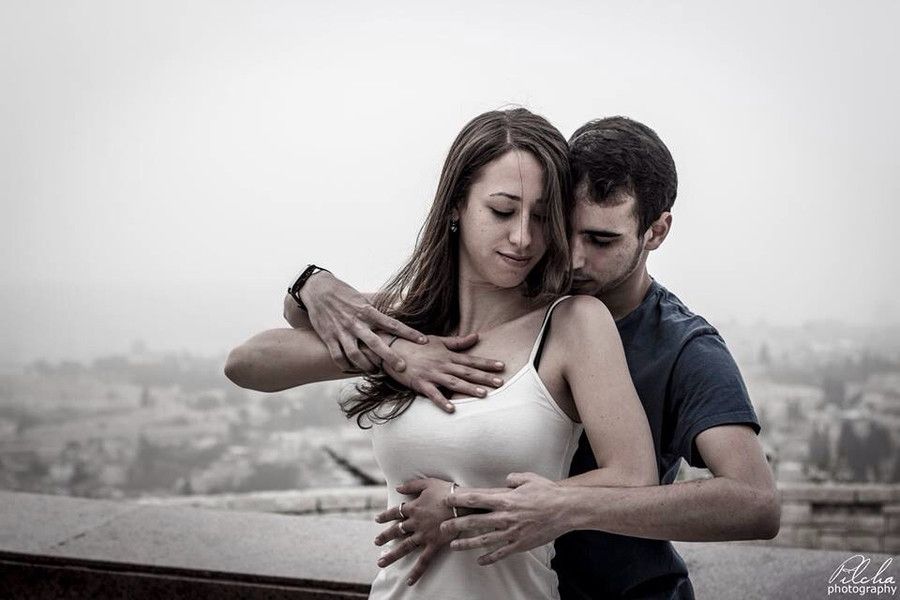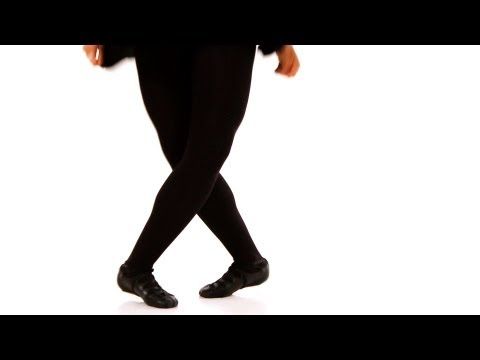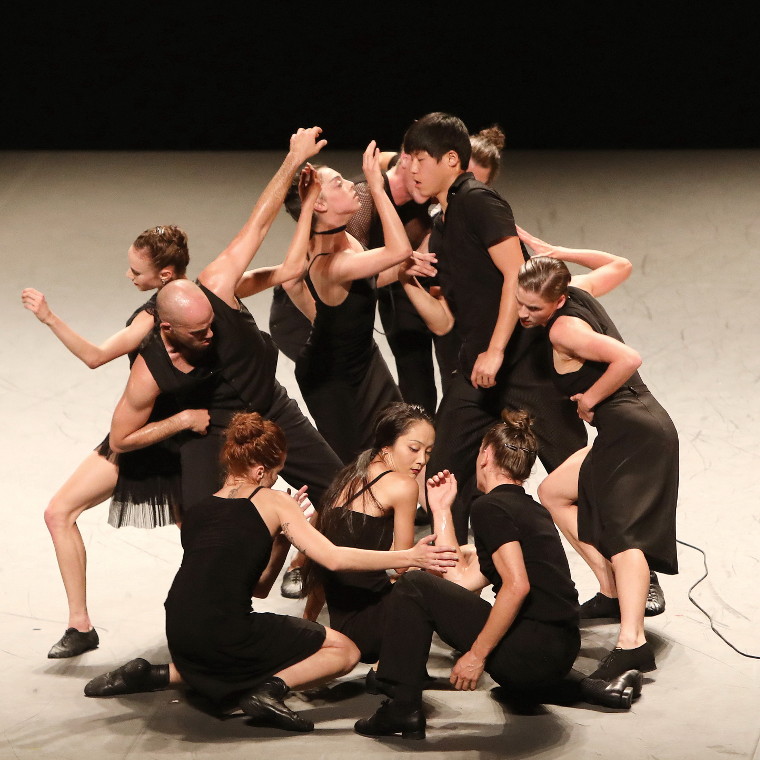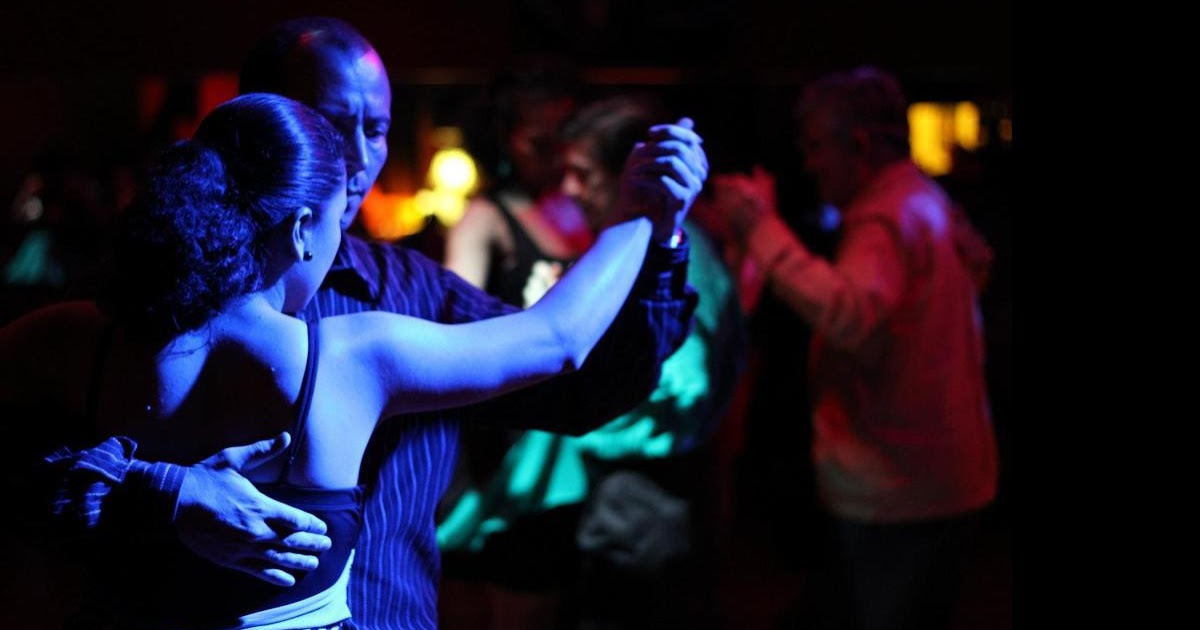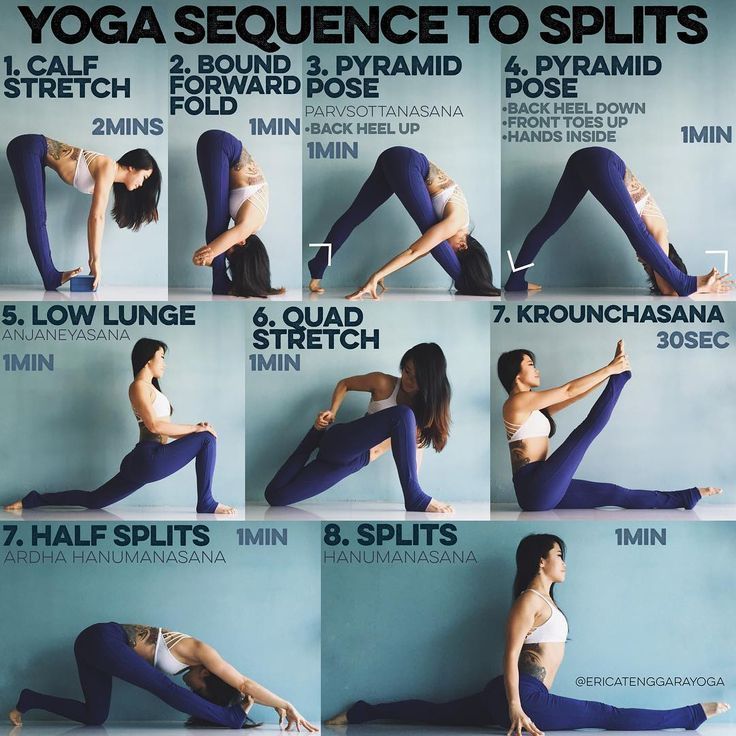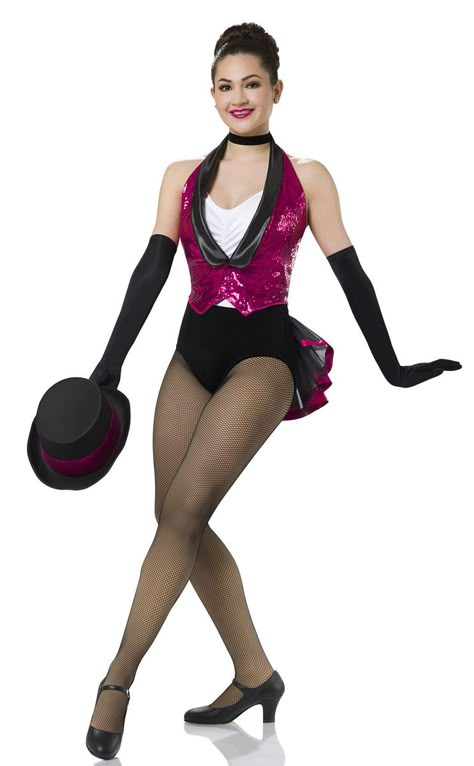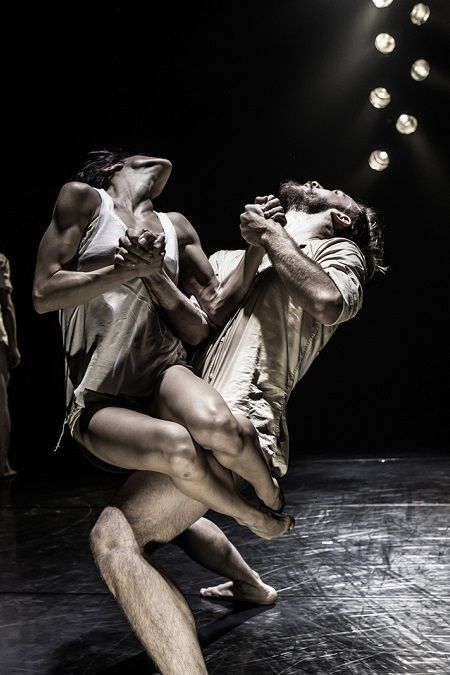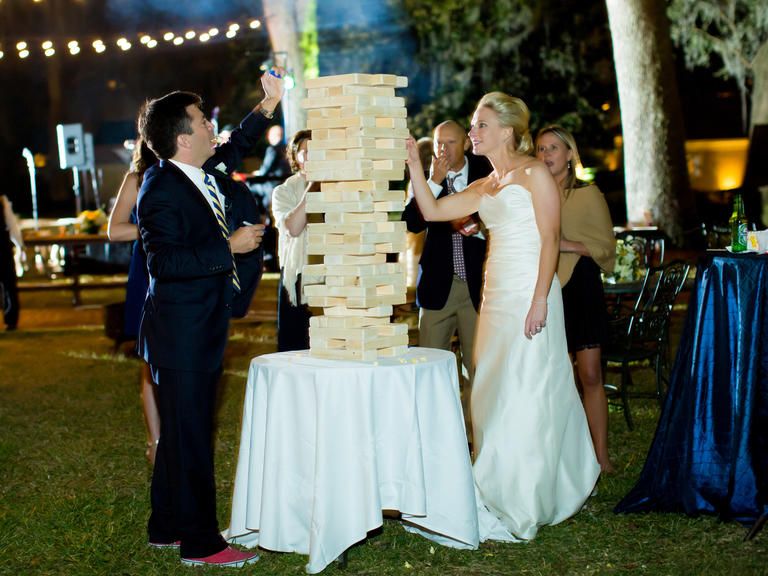How to dance dominican bachata
When and How to Use Footwork in Dominican Bachata
Share this article with somebody
Here’s a terrible stereotype for you: Dominican bachata is all about fast footwork. It’s terrible because not only does it make the dance seem scary, but it’s also incorrect. There’s far more to Dominican bachata than just footwork. And sometimes, there’s really not much footwork at all.
Let’s take a look at when to do footwork in Dominican bachata, when you should keep it simple, and why. We’ll also break down some bachata songs to help you put all this into practice at home.
Dominican Bachata Isn’t About Fast Footwork
Dominican bachata is about musicality, connection, attitude, and body movement. As a street dance rather than a studio dance, the most impressive thing is the flow or sabor. This means it’s not technically sound footwork that makes a bachata dancer look great. It’s when and how they use use that footwork.
Footwork can be used to reflect what’s happening in the music, especially in certain parts of the bachata song. Take a look at how Cristian & Katerina use their footwork to accentuate the music in this after-class demo:
Yet this isn’t the only way to dance Dominican bachata with musicality and style. While Kimberly Ramos of Araguacu Latin Dance Company uses some footwork and syncopations in this demo, she’s mainly playing with her basic steps—and they are as impressive, flavourful, and fun as her footwork.
Footwork is one tool in the Dominican bachata dancer’s repertoire, but it’s certainly not the only one. And if you hit every syncopation, your footwork can become underwhelming.
Why Dominican Bachata Music Makes You Want to Syncopate More
If you’re used to dancing bachata moderna or sensual bachata, then you’ve probably been taught to hit syncopations when they are the most prominent thing you hear in the music. It might be with footwork, sharp body movement, or even arm styling, but no matter how you do it, the goal is the same: to illustrate what’s happening in the music.
But this isn’t because you should hit every single syncopation in the song. It’s because the various instruments aren’t always as obvious in the music to which we dance bachata moderna and sensual. When an instrument, rhythm, or beat is the main thing you hear, it’s purposeful.
Bachata started life as party music played by a band. This meant the five principal instruments (three guitars, two percussion-based ones) were easy to hear. Every strum of a guitar and every beat of the bongos became part of the sound of the song—even when the vocals were supposed to be the focal point.
Yet over time, as bachata moved to the recording studio and the DJ deck, new instruments and musical influences came into play. The melody became stronger, while songs began borrowing from pop, R&B, hip hop, tango, and more. As a result, the distinct rhythms played by the bachata instruments, while still necessary for a song to be bachata, aren’t always centre-stage in today’s bachata songs.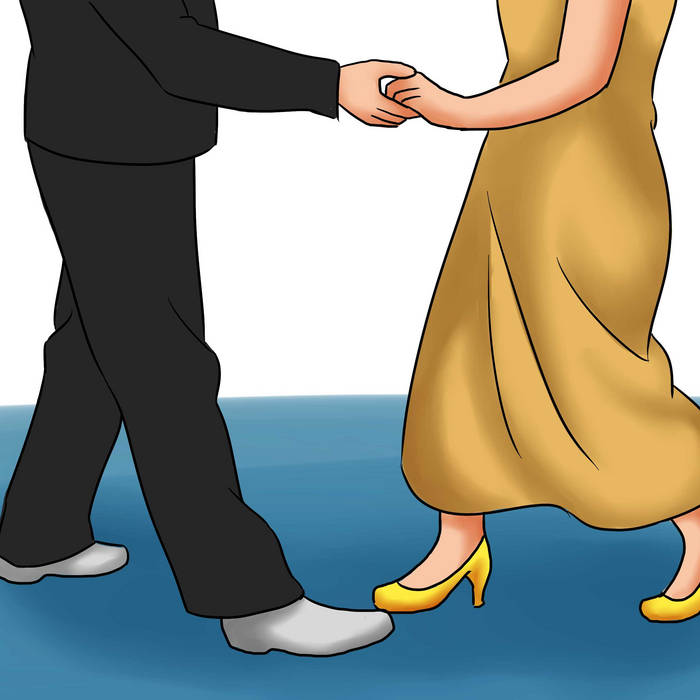 Compare these two tracks, for example:
Compare these two tracks, for example:
“Margarita” by Raulín Rodríguez
“Entre Los Dos” by SP Polanco, feat. Karlos Rosé
In “Entre Los Dos”, it’s easy to identify the moments for sensual or non-traditional bachata movements (e.g. the long intro and the outro), footwork (from 3:00), and your standard bachata moves. Meanwhile, in “Margarita”, our attention is drawn to all the different instruments. If you’re not used to this style of bachata, it can be harder to distinguish when the song is calling for us to do footwork and when we can relax.
More traditional-sounding bachata music can feel busy. You hear far more of the instruments, even the ones that aren’t necessarily leading the song, and this in turn makes you want to syncopate more.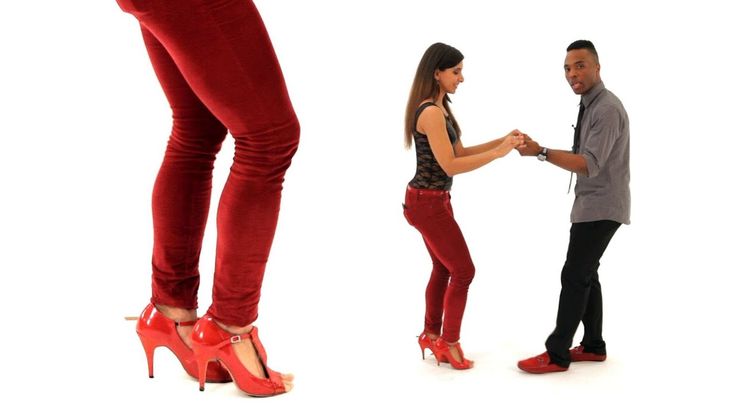 But that’s not always a good thing.
But that’s not always a good thing.
When Should You Do Fast Footwork? A Quick Bachata Musicality Class
Dancing needs variety to be interesting, both for the dancers and anyone watching. Fortunately, bachata music naturally includes plenty of variety in the structure, rhythms, and energy. As dancers, you can match that with your movement to create a more interesting and musical experience.
When you do lots of footwork or syncopations, you are dancing with high levels of energy and expression. Think of it as dancing at levels 8–10 out of 10. This means that you want to do this during the most high-energy, explosive part of the song.
If you dance at level eight during the quiet parts of the song, you can only go up two levels during the high-energy sections—and that’s barely going to be noticeable. Plus, you and your partner will likely be pretty worn out by the time the song ends.
This doesn’t mean that you can’t do any footwork during other parts of the song. You can add footwork and syncopations to most sections of the music, but you want to save your all-out, intense footwork for the intense part of the bachata song. And that’s called the mambo.
You can add footwork and syncopations to most sections of the music, but you want to save your all-out, intense footwork for the intense part of the bachata song. And that’s called the mambo.
Bachata songs can be divided into three main parts, in addition to the intros, outros, and musical interludes that borrow from other musical genres. These three are:
- The derecho: this is the most tranquil part. The lyrics will likely demand your attention, and you’ll probably find yourself dancing smaller movements and relaxing into the song.
- The majao: this is a higher-energy section, and it’s often the song’s chorus. It should make you want to dance with more enthusiasm. Even if the song is sad, you might find yourself smiling here. Don’t allow yourself to be misled by how many beats of an instrument there are. For example, the güira is struck fewer times per count in the majao than in the derecho, but it’s done with more energy here.
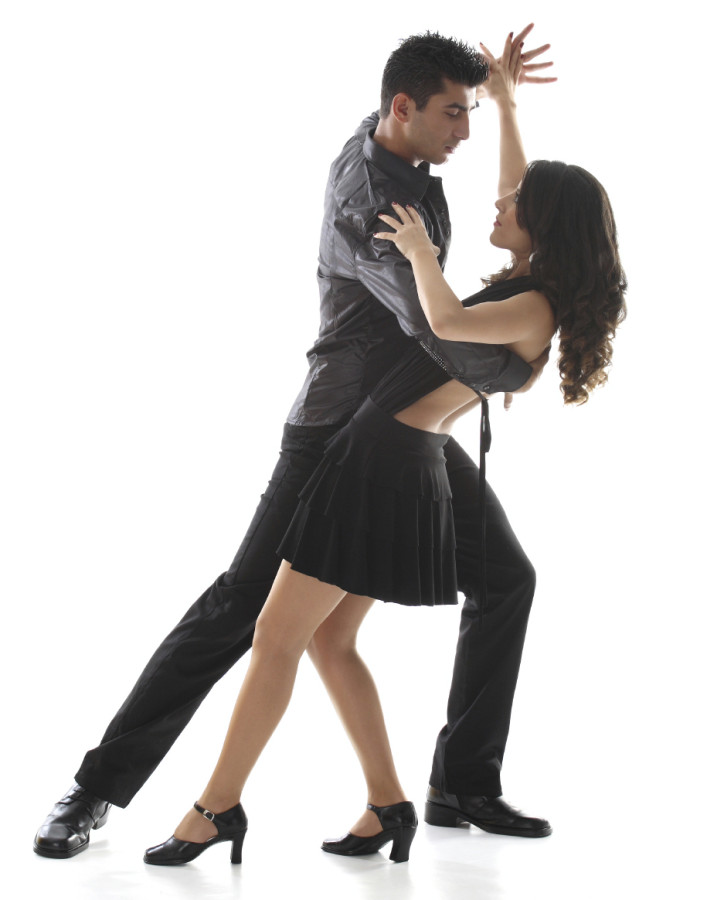
- The mambo: this is when the instruments are in the spotlight. There will be no vocals, and the lead guitar or requinto will literally lead the song. This is the time to play with fast footwork.
Of course, even within the derecho and the majao, you’ll notice smaller variations in energy. There’s often a slight change in the music after every 28 or 32 beats, and you’ll notice the instruments building up to this. And even within our 8-beat counts, you can often trace a change in the energy. Overall, however, these are subtler when compared with the differences between the derecho, majao, and mambo.
If you’re not used to traditional bachata music, you might struggle to identify these sections. Even a derecho can seem more instrumental than a sensual bachata’s mambo. Let’s break it down with some examples, traditional and modern.
“Soy Mía” by Natti Natasha
In this powerful, feminist song, the first derecho starts at around 0:15. It switches to the majao at around 0:55. The mambo, meanwhile, appears at around 2:35. While there aren’t any lyrics at this point, Natti Natasha briefly speaks over the mambo, saying “llora, guitarra, llora” or “cry, guitar, cry”. It’s a direct invitation to the requinto to go all out. Now see if you can work out when the other switches happen.
“Su lado de cama” by Joan Soriano
This romantic love song goes straight into a calm derecho, while the first majao comes in at roughly 1:15—the moment that, even in the video, they can’t resist dancing. The mambo starts at 2:19 before switching back to a derecho at 2:45. Again, see if you can identify the other switches.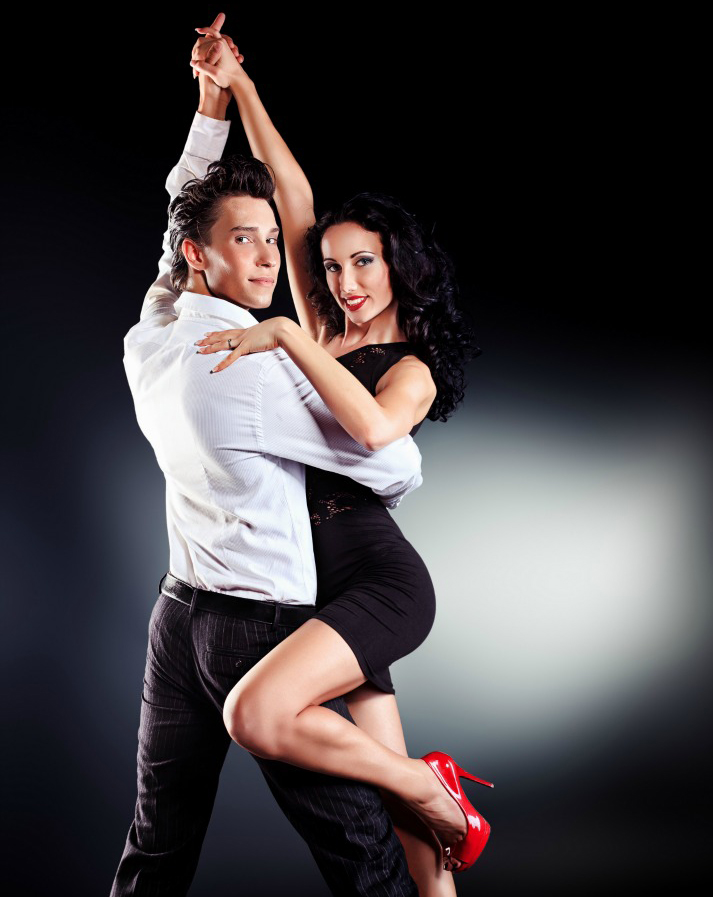
How to Practise Footwork in Dominican Bachata
We’ve looked at the musical theory behind when you should do footwork. Now, it’s time to put it into practice. Try this drill to help you:
- Listen to a song a couple of times. Even though it might be tempting, don’t dance to it just yet.
- Now, dance to the song without any syncopations. You might prefer to stick to variations of the basic step. Pay attention to the changes in energy, and see if you can work out where the mambo is, where the breaks are, and where the song feels mellower.
- Optionally, listen to the song again without dancing.
- Add minimal amounts of footwork as you dance to the song, focusing on the mambo and breaks.
- Repeat stage 4, introducing more footwork as you feel is appropriate. Remember, however, that when the song is calm, you can relax. Either keep that footwork low-key or save it for the moments when the music calls for energy.
- Pick a new song, and repeat.

Remember, achieving good musicality—just like achieving clean, fast footwork—doesn’t happen overnight. It takes time and practice to hone this skill. As well as this exercise, you can download the Bachata Musicality app to help you recognise the different rhythms and practise with resources like Bachata Breakdown ¡En Vivo! and eMusicality. Look for teachers who prioritise musicality, such as Carlos Cinta, Kimberly Ramos in Toronto, and Pierre Henry in London.
Done well, fast footwork is fun and impressive—but there’s no need to exhaust yourself. Dominican bachata can also be relaxed, sensual, or full of emotion. Just listen to the music and enjoy yourself.
Feature photo credit: Nicole Glass Photography / Shutterstock.com
Ella Baila
Ella Baila is the alias of a bachata teacher. She dabbles in most Afro-Latin dances and is blues-curious.
BACHATA DANCE OF DOMINICAN REPUBLIC
Dominican Republic
5 minutes read
by Kunal Tomar || 9 months ago
Bachata is a Latin American music genre that originated in Cuba. It has been popularised by artists like Celia Cruz and Olga Guillot. Bachata dance is a Latin American dance style with its origin in the Dominican Republic. Bachata is usually danced to the tune of the Cuban Bolero music. It is a partner dance and the lead can decide to chose the open position or semi-closed or closed positions.
It has been popularised by artists like Celia Cruz and Olga Guillot. Bachata dance is a Latin American dance style with its origin in the Dominican Republic. Bachata is usually danced to the tune of the Cuban Bolero music. It is a partner dance and the lead can decide to chose the open position or semi-closed or closed positions.
The Bachata comprises of four styles and they include the western traditional, Bachatango, modern/moderna, and Bachata sensual. Bachata dance has gained popularity across the globe and is now performed all over the world.
History of Bachata music and origin of bachata dance:
The bachata dance has been performed throughout the world since its creation. It is now one of the most popular dances in the Caribbean region. The word “bachata” means “reunion or party” in Spanish.
Around 1950, the rhythms of a new kind of music started developing which resulted into the ‘bachata’ music as we know today. The bachata music replaced different initial instruments with others such “guira”. Sometimes these rhythms are referred as “guitar boleros” in some places.
Sometimes these rhythms are referred as “guitar boleros” in some places.
Historical facts suggest that this dance style was first developed by Luis Segura who is commonly referred to as the ‘Father of Bachata’. However, it was Jose Manuel Calderon who is officially said to have recorded the first official song for this dance form on 30th May 1962.
It is said that the Dominican Republic dictator, Rafael Trujillo, was a supporter of the merengue dance style and detested the bachata considering it a lowly style of dance and music. He is said to have disliked the call so much so that he banned the bachata songs and dance. This led to the bachata being performed in lower strata of the society. Even after the assassination of Trujillo in 1961, it took some time for bachata to become popular since it was still shunned as a lowly dance for quite some time. Once the bachata reached beyond the borders of the Dominican Republic, the world has seen the rise and rise of the dance.
Costumes used in the Bachata Dance:
Since this dance style involves both male and female the costumes used will vary accordingly and they are as follows:
For women:
The attire worn includes a short multi-layered ruffle that at times also exposes the midriff of the performer to add to the sensuality that this dance style possesses.
For men:
The attire worn includes colourful deep V-neck shirts and pants to go along with it.
Music involved in the Bachata dance:
The musical instruments mainly used in this style of dancing includes Requinto i.e. lead guitar, Segunda i.e. rhythm guitar, guitar, electric guitar, bongos, and güira i.e. a percussion instrument. In addition, the music produced for this dance style basically involves the use of lead guitar instrumentation which includes a few repeated broken chords.
Training availability and the technique involved in the Bachata dance:
The basic technique of this dance form involves the use of three steps followed by a “tap step”. In addition, this dance may also include the use of several forms of step syncopation such as the “double step”. Furthermore, a few Bachata performers in the west have also introduced movement in the “hip” along with the tap step. As for those interested in learning this dance, there are many schools/centres available around the world that provide for basic training in this “energetic” form of dancing.
In addition, this dance may also include the use of several forms of step syncopation such as the “double step”. Furthermore, a few Bachata performers in the west have also introduced movement in the “hip” along with the tap step. As for those interested in learning this dance, there are many schools/centres available around the world that provide for basic training in this “energetic” form of dancing.
The Best Bachata Music and Dance Festivals to Attend in 2022 and 2023:
Bachata music festivals are some of the best events in the world. Check out these upcoming bachata dance festivals!
¡Bienvenidos! The Spanish word for welcome means “come on in.” And that’s exactly what you should do when you attend a bachata festival. These are some of the most exciting and fun events in the world.
a. Festival Ritmo Cuba – International Cuban Dance Festival in Havana (Havana, Cuba)
This event is happening from April 10th to 16th 2023 in Havana, Cuba. It features live performances by top Latin artists as well as workshops and master classes.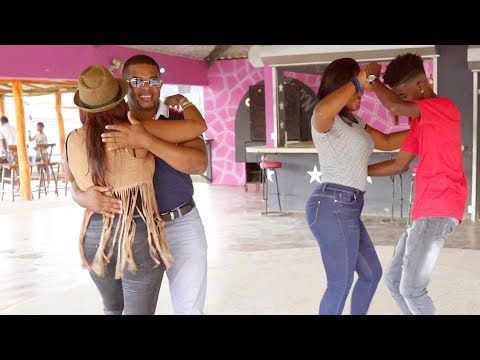
b. The International San Francisco Bachata Festival
The International San Francisco Bachata Festival prides itself on bringing some of the Top Artists and Talent from all over the world to the Bay Area. Established in 2009 we have had to opportunity to share our love of dance and creativity by bringing this amazing talent to our community.
c. BACHATA LAS VEGAS MEGA FESTIVAL 2022
This Bachata Festival is from the creators of the San Francisco International Bachata Festival & also the Sexy & Sensual Latin Festival! Tony Lara & Rodiculous Pro!
The Bachata Dance Festival is from September 23 till 26, 2022. 4 days & 4 nights of an undeniably good time!
d. CRAZY LION BACHATA FESTIVAL
The Crazy Lion Festival will be held in Gothenburg Sweden and the dates for this fun Bachata Dance Festival are from October 14 till 16, 2022!
e. PARIS BACHATA FESTIVAL
THE PARIS BACHATA FESTIVAL, 10TH ANNIVERSARY EDITION WILL BE HELD FROM NOVEMBER 25-27, 2022 IN PARIS, FRANCE!
This popular Dance Festival will feature the following Bachata Dance styles:
Bachata Sensual, Urban, Street, Moderna, and Traditional. It will also feature Salsa, Kizomba, Urban Kizomba, Semba, Striptease, Ladies Bootcamp, and Men’s & Women’s Styling.
How to dance the Bachata (Bachata dancing Basic tutorial video for beginners):
The dance style is characterised by its fast tempo and syncopated rhythms.
The dance style is also known as “the Cuban rhythm” because it was first performed at the beginning of the 20th century.
The dance style involves fast footwork, intricate hand movements, and a lot of energy.
The following 3 videos show the basic steps of the Bachata dance explaining how to do the bachata dance. All these 3 YouTube channels provide extensive tutorials covering the basics of Bachata dancing for beginners.
- Bachata Dance Academy
- Roberto & Magdalena Bachata Dance
- Marius & Elena Official
¡Bienvenidos! This video will teach you how to dance bachata. The steps are simple and easy to learn.
Some of the best Bachata Dance Videos
This video shows how bachata dancers perform the dance style with a lot of passion and intensity.
Views: 849
BACHATA DANCE DOMINICAN REPUBLIC
Related posts
TopWhy will we never dance bachata like the Dominicans?
Dominicans dance bachata differently: light, uncomplicated, plastic. Their attitude to dance is simple - first of all, it is a communication tool, and never an end in itself. Almost none of them learned to dance specifically, in the Dominican Republic there are no bachata schools for locals, but everyone fervently moves their hips from birth.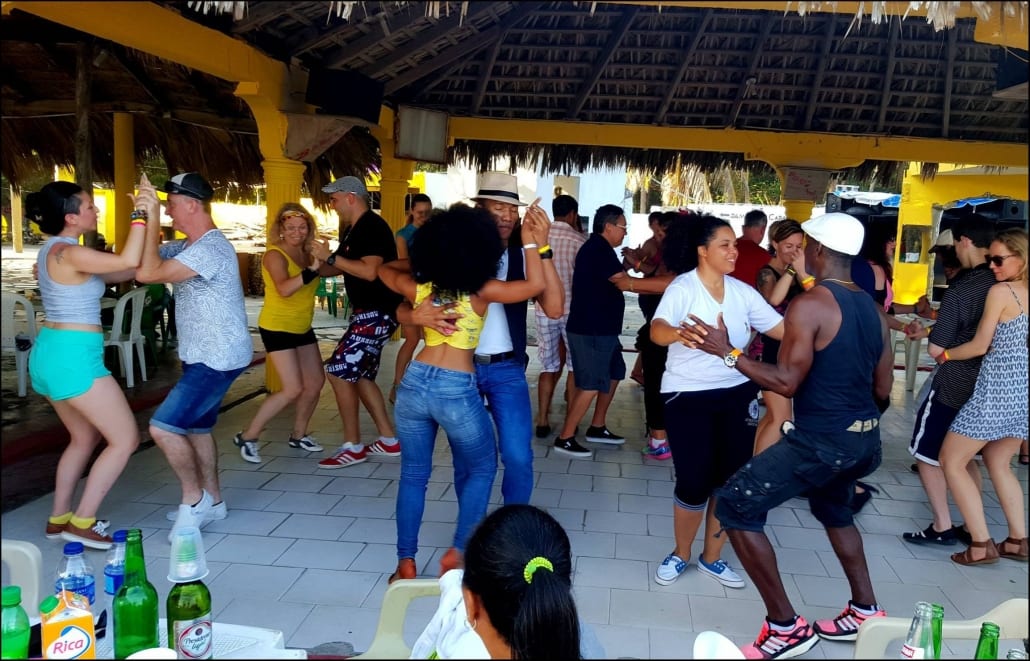
On the island, a few people can explain the basics of plastic surgery or how to do the steps. And even then, they are mostly professional choreographers who dance other dances besides bachata. But the naturalness and smoothness of the movements of most ordinary Dominicans is fascinating.
Our bachata is the result of training and labor
Europeans who dance bachata outside the Dominican Republic know what is right in music, what can and cannot be done, where are the boundaries of style and are aware of the intricacies of figure building. For a long time they learned the right flow, the right swing, the right plastique. Therefore, their bachata is more choreographic, more systematic and calculated, they take the dance seriously. Some are so serious that they start non-children's international holivars, distribute those who dance correctly and who do not into different camps.
For Dominicans, dancing is just one aspect of communication
Dominicans don't care how they dance. They are fascinated by the choreography of a moderna bachata dancer visiting the Dominican Republic and touched when a white man tries to dance authentically. He tries - because in order to really dance like the Dominicans, you must first of all treat the dance in the same way, without piety, without cultivating a single correct style, forgetting that music can be counted. And above all, local dancers never make dance the main occasion of any event, be it a festival, a party or a meeting with friends.
They are fascinated by the choreography of a moderna bachata dancer visiting the Dominican Republic and touched when a white man tries to dance authentically. He tries - because in order to really dance like the Dominicans, you must first of all treat the dance in the same way, without piety, without cultivating a single correct style, forgetting that music can be counted. And above all, local dancers never make dance the main occasion of any event, be it a festival, a party or a meeting with friends.
Dance is only an addition to communication, a means for intimacy, for harmonizing and synchronizing the surrounding reality - music, a loved one, a buzz from movement. Therefore, when you go to an average Dominican party, you will see a lot of noisy drinking people, and dancers dancing just one figure during the whole evening. One Carl!
Video from the personal archive of Dasha Elizarova, project Bachateame Mamita
All the rules, consistency, figure building, disputes about how to dance a real bachata, authentic festivals were either created by non-minicans or appeared outside the island.
Dominicans are mainly engaged in each other, and dancing is a great prelude for this.
Video from the personal archive of Dasha Elizarova, project Bachateame Mamita
Women's style in bachata
We turn dance into a big event with rules
It's hard for us to give up the idea that dance should be varied, interesting, spectacular. From the idea that it is important to dance to a certain score, to break music into eights.
It is difficult to question the words of a beloved teacher who says that if you dance differently, you will betray the style. It is difficult to let go of yourself and your body, to go beyond the learned figures, it is difficult to improvise, it is difficult to find yourself in the dance.
But we dance the way we dance, because, unlike the Dominicans, we all learned this. We studied at dance schools, where they explained to us how to do it and how not to. And where very little attention is paid to the most important thing, to what the majority came to dance for - the pleasure of dancing, improvisation, attention to the person with whom you are dancing. To a person, girl or man, and not a partner or partner, from whom you expect the correct conduct or execution of figures.
To a person, girl or man, and not a partner or partner, from whom you expect the correct conduct or execution of figures.
As a result, at parties, outside of dancing, we see bored figures buried in phones, waiting girls sadly sitting on the edges of the dance floor, and only occasionally - cheerful broken companies from those schools where communication is as important as dance.
We will never really dance bachata like the Dominicans. We came to dance for completely different reasons, we treat it in a completely different way, and it's too difficult to change it. Yes, and no need to change.
It is important to follow your line of dance development
We have a lot to learn from the Dominicans: ease of attitude to dance and the surrounding reality, the ability to find your own unique style within two or three basic steps. But, unlike them, the majority of dance school visitors are looking for, in addition to new communication, something completely different - an interesting hobby, an opportunity for self-realization, discovering new possibilities for their body and mind, a variety of figures and footwork, new approaches and interesting theories.
And in the Dominican Republic itself, there are dancers who are distinguished by the richness of their steps, their elegantly controlled style, a wide range of figures, and the clarity of lines and movements. Or too bright, too prominent character of the dance. But they usually say about such people that they dance inauthenticly, not the way they should.
Video from the personal archive of Dasha Elizarova, project Bachateame Mamita
We will never really dance bachata like the Dominicans. We came to dance for completely different reasons, we treat it in a completely different way, and it's too difficult to change it. Yes, and no need to change.
It is important to understand that with all possible trajectories of learning and immersion in culture, the most incorrect is the literal and blind copying of the external feed. Either find yourself, your style and your pleasure, as the Dominicans do, or develop yourself as a dancer without looking back at the external match with any original.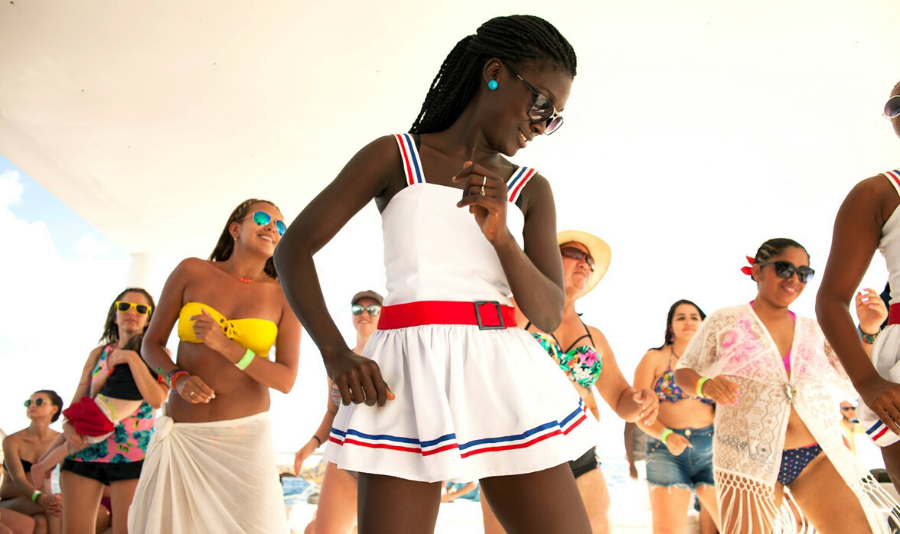
Share on social networks:
Sexual overtones in pair dances
What is more effective: individual or group lessons?
Do you have a predisposition to dance?
Argentine tango through the eyes of a salsa dancer
Distribution of roles in a salsa party
Terrible tango nuevo
Where to find inspiration for dancing?
Selection of dances according to alcohol preferences
Dispute over musicality
Why tango?
The seven deadly sins of teachers
12 life hacks to quickly learn to dance
Does dancing make us better?
Destroying the myths about pair dancing
The Salsa series as a mirror of the community
Self-destruction of the pair dance community
Pair dancing as a source of strength.
Salsa: destroyers of stereotypes
Dangerous sexuality
Rediscovering dancing. Mami project.
Happiness inside
What you need to know about dancing in the Dominican Republic
07/19/2019
Incendiary Caribbean rhythms are a real hallmark of the Dominican Republic.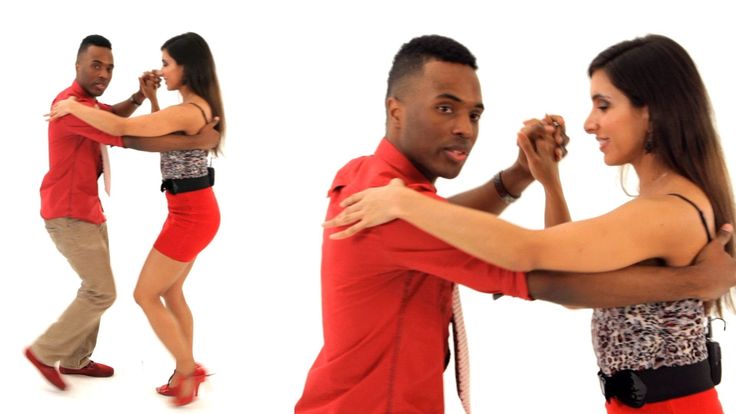 Music sounds here literally everywhere, that's why they dance a lot in Dominican cities and resorts, from the heart and with pleasure. And tourists too. What dances are the most popular here and what are their "chips"?
Music sounds here literally everywhere, that's why they dance a lot in Dominican cities and resorts, from the heart and with pleasure. And tourists too. What dances are the most popular here and what are their "chips"?
Music in the Dominican Republic has absorbed the traditional rhythms of Haitian, African American, Cuban and Spanish cultures, finding its own unique sound, fully revealing the positive, free and cheerful nature of the local people.
Tourists, having seen at least once how bachata or merengue are danced, fall in love with these dances and melodies forever, and many even learn how to dance them. Music sounds everywhere - in large cities and provinces, in entertainment venues and on the streets.
With all the external complexity, mastering the basics of Latin American dances is easy and simple. We present the main dance styles.
BACHATA
This melodic and sensual pair dance, originating in the Dominican hinterland, has gained popularity not only at home, but throughout the world. Bachata can now be seen and heard almost anywhere in the world. There are no super complicated steps and movements in this dance, but there is lightness and energy. A relatively small number of steps and elements is compensated by the plasticity of the partners' bodies, the softness of the lead, and the close distance of the dance.
Lyrics, as a rule, tell about the unrequited love of a man for a woman, about suffering and experiences. The main instruments used in the performance of bachata are the guitar, maracas, and less often the bongo (a Cuban percussion instrument resembling a double drum).
In discos, people like to dance bachata because of its incendiary nature, and you can learn it right on the dance floor. The movements are extremely simple: four steps forward, four steps back, hands clasped together. Rarely used are transitions with the “tossing” of the partner from side to side.
MERENGUE
Speed, unique charm and fervent rhythm are the three main characteristics of merengue - Dominican folk dance.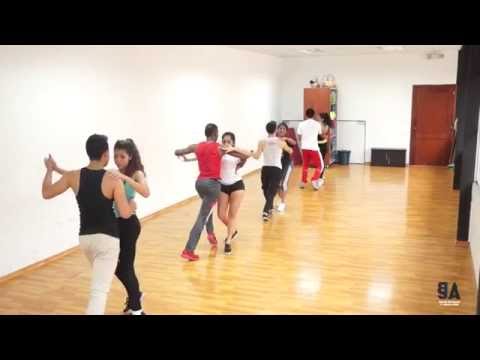 Dominicans dance it at festivals and during carnivals, at discos in bars and on the beaches, and sometimes just on the street. The main dance step is stepping from one foot to another, close hugs, turns and any improvisations.
Dominicans dance it at festivals and during carnivals, at discos in bars and on the beaches, and sometimes just on the street. The main dance step is stepping from one foot to another, close hugs, turns and any improvisations.
In 2016, UNESCO declared merengue a Masterpiece of the Oral and Intangible Cultural Heritage of Humanity. Any Dominican will tell you that merengue is an integral part of his soul. Merengue texts tell stories from everyday life, and the instruments for its performance belong to the three main nations of the Dominican Republic: güira (a long metal cylinder with holes and a brush that is driven up and down on it) - the heritage of the Taino Indians, the tambora drum comes from Africa, and accordion - from Spain.
SALSA
Burning, like spices, and multi-component, like the sauce of the same name, salsa is one of the popular dances of the Caribbean region. Salsa is stylistically associated mainly with the Cuban tradition, although it contains Puerto Rican, Colombian and other Latin American influences, including pop, jazz, rock. In the Dominican Republic, she is loved and danced with pleasure.
In the Dominican Republic, she is loved and danced with pleasure.
With minor adjustments for different styles, the basic movements consist of fast and slow steps to the four percussive rhythms (counts, beats) in the music. Every fourth count is used for slow weight transfer, pause, or, in some styles, for a kick (throwing the leg) or tap dance (kicking the floor with the foot).
SON
The dream appeared in the northern cities of Puerto Plata and Montecristi between 1870 and 1890. The creation of this genre, which merged Latin American and African elements (according to one theory, it originated from the bolero), is attributed to the Cuban musician and composer Miguel Matamoros. Popular Dominican artists performing sleep include Sonia Cabral, known as the "queen of sleep", the band Maniel, the band Bonyé, who perform every Sunday evening in the colonial city of Santo Domingo, and Los Hermanos Heredia.
REGGETON
The youngest of the popular dances in the Dominican Republic is reggaeton.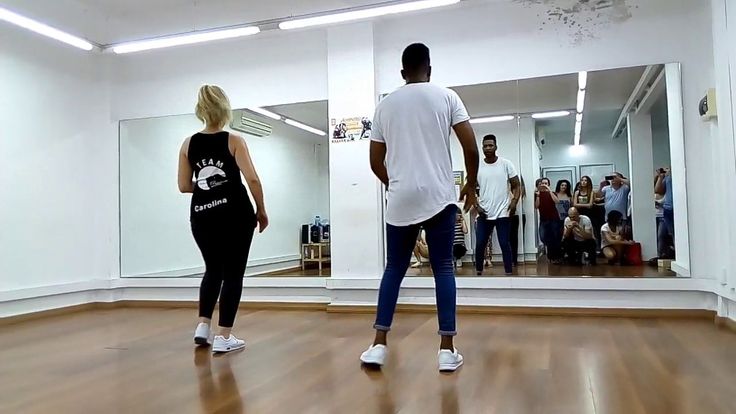 Today it is considered one of the most sensual rhythms in the world. We can say that this is a kind of Caribbean version of hip-hop. Major hits are imported from Puerto Rico and Latin American labels in the US, but there are also prominent local exponents of the genre such as Don Migalo, Ingco Crew and Luny Tunes.
Today it is considered one of the most sensual rhythms in the world. We can say that this is a kind of Caribbean version of hip-hop. Major hits are imported from Puerto Rico and Latin American labels in the US, but there are also prominent local exponents of the genre such as Don Migalo, Ingco Crew and Luny Tunes.
HOW TO LEARN TO DANCE
Can't dance? Not scary! In major cities and resorts of the Dominican Republic, it is easy to find a school or a master class where, in a couple of classes, they will explain the basic movements of Latin American dances - merengue with bachata, and reggaeton, and salsa. You can also attend a lesson by the pool - there are teachers in almost every hotel. Or just go outside, where the locals are sure to dance, inviting everyone to join.
After that, you can, with a clear conscience, go dancing to the nearest club. Although you can do without preliminary lessons: more expression and hip movements - and you are on the right track.